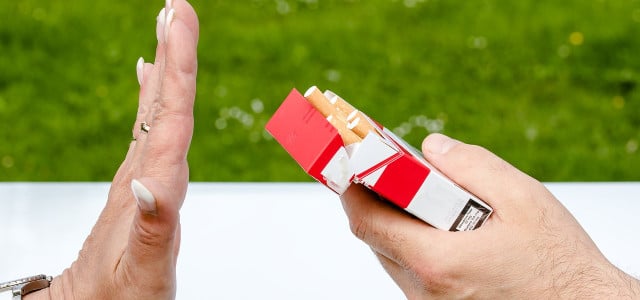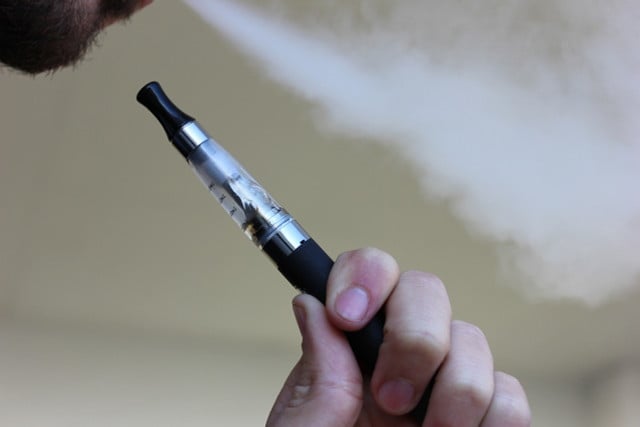
Withdrawal symptoms in people trying to quit smoking are not uncommon. Here you can find out why, what symptoms you have to reckon with and how you can successfully combat withdrawal symptoms.
There are good reasons to quit smoking and become a non-smoker. Perhaps you have already thought about giving up cigarettes altogether for the sake of your health or the environment. But it can be difficult to put that decision into action.
This is mainly due to the fact that nicotine is highly addictive: This is why withdrawal symptoms appear when you, as a smoker, suddenly stop consuming tobacco. However, if you are prepared and know how best to deal with withdrawal symptoms, you can still break the addiction.
Why do withdrawal symptoms occur at all?

(Photo: CC0 / Pixabay / geralt)
If you smoke regularly, you become dependent on nicotine for a long time. There are various definitions of how such a dependency manifests itself. The WHO offers a common guide: It publishes a list of standard definitions of various diseases and health problems, the so-called ICD (International Classification of Diseases).
According to ICD-11 – the current eleventh edition of the list – at least three of the following must be true for a doctor to diagnose nicotine addiction. You are therefore dependent if you have within the last year
- have often felt a strong desire or compulsion to smoke
- Have trouble controlling when and how much you smoke
- suffered from withdrawal symptoms when you were unable to smoke (or used tobacco to combat withdrawal symptoms)
- developed a higher tolerance (i.e. had to use more and more tobacco to get the same effect as before)
- neglected other interests and activities
- continued to smoke in spite of consequential damage to your health
Once your body gets used to your regular supply of nicotine, it’s hard to break the habit. If you try it anyway, as with any addiction, withdrawal symptoms can occur.
Smoking withdrawal symptoms: These are the symptoms

(Photo: CC0 / Pixabay / PublicDomainPictures)
Withdrawal symptoms can start a few hours after the last cigarette. In what form and how severe they occur varies greatly from person to person. Among other things, how much and how long you have smoked before plays a role. However, there are a number of symptoms that occur particularly frequently. Possible withdrawal symptoms from smoking include:
- sleep disorders
- general unrest
-
Nervousness, irritability and aggressiveness
- depressed mood
- lack of concentration
- falling pulse
- increased appetite
- weight gain
Withdrawal symptoms are usually most noticeable and peak within the first three days. They can also persist for days or even weeks afterwards. Normally, however, they become significantly weaker after seven to ten days.
Combatting Withdrawal Symptoms: Exercise and Distraction

(Photo: CC0 / Pixabay / Antranias)
If you’re suffering from withdrawal symptoms, you don’t have to sit through them helplessly: there are ways to actively fight them. The Federal Center for Health Education (BZgA), for example, provides recommendations on this. She runs the Internet portal “Smokefree”, which serves as a contact point for people who want to quit smoking.
Basically, the BZgA advises to exercise a lot during the weaning phase and to do sports. In this way, withdrawal symptoms such as restlessness, irritability and tiredness can be combated. You can also distract yourself from the strong desire to smoke.
It is also important that you avoid typical situations in which you used to smoke – for example the cigarette break with colleagues or the restaurant with a smoking area. It can also be helpful to let your family and friends know that you are quitting smoking. Ask her to be supportive and understanding if you might be a bit more irritable than usual during this time. This will avoid additional conflicts.
More tips against withdrawal symptoms

(Photo: CC0 / Pixabay / lindsayfox)
In addition to exercise and distraction, there are other ways to relieve smoking withdrawal symptoms:
- If you feel irritated, you can learn relaxation exercises and do them regularly, such as autogenic training or yoga.
- If you feel tired and have trouble sleeping at night, exercise and lots of fresh air during the day will help. Try to relax in the evening before you go to bed – for example with a leisurely bath or with relaxation exercises. In addition, you should generally plan longer sleep times for the period of withdrawal.
- If you feel a strong compulsion to smoke, have a sip of water or brush your teeth. That sounds banal, but it helps to overcome the acute urge for the moment.
- You can chew gum or suck on candy to relieve cravings. Also, you should drink a lot. The best snacks for cravings are fruit and raw vegetables.
There are also a number of substitute products designed to help alleviate or eliminate smoking withdrawal symptoms. These include, for example, nicotine chewing gum and patches or tobacco alternatives such as e-cigarettes or herbal cigarettes. However, whether these products actually facilitate withdrawal is highly controversial. They also contain harmful ingredients. The German Cancer Research Center classifies e-cigarettes as a health risk.
After withdrawal: Stand firm
If you’re looking to quit smoking, it can be helpful to join a cessation program. There you can exchange ideas with people who have the same goal and have similar experiences.
Such a group can also help you stay away from tobacco after you’ve overcome your withdrawal symptoms. Because an addiction often has psychological effects for a long time: even if your body no longer craves nicotine as much as in the direct weaning phase, the desire for a cigarette can come back. It’s good when you can talk openly about such moments and get support from like-minded people.
Smoke-free is worthwhile – also for the environment

(Photo: CC0 / Pixabay / mohanselvaraj)
If you do without tobacco products, you are not only doing something good for yourself, but also for the environment. For one thing, tobacco growing is often associated with deforestation and environmental pollution. On the other hand, cigarette butts are harmful to the environment: the toxins they contain pass into the soil or water and endanger many animal species. It is therefore definitely worth quitting smoking – for your own health and for a more sustainable relationship with nature.
Read more on Techzle.com:
- 5 tips on how you can live more sustainably immediately
- Going for a walk: A few steps a day are healthy
- Learning to meditate: tips for beginners